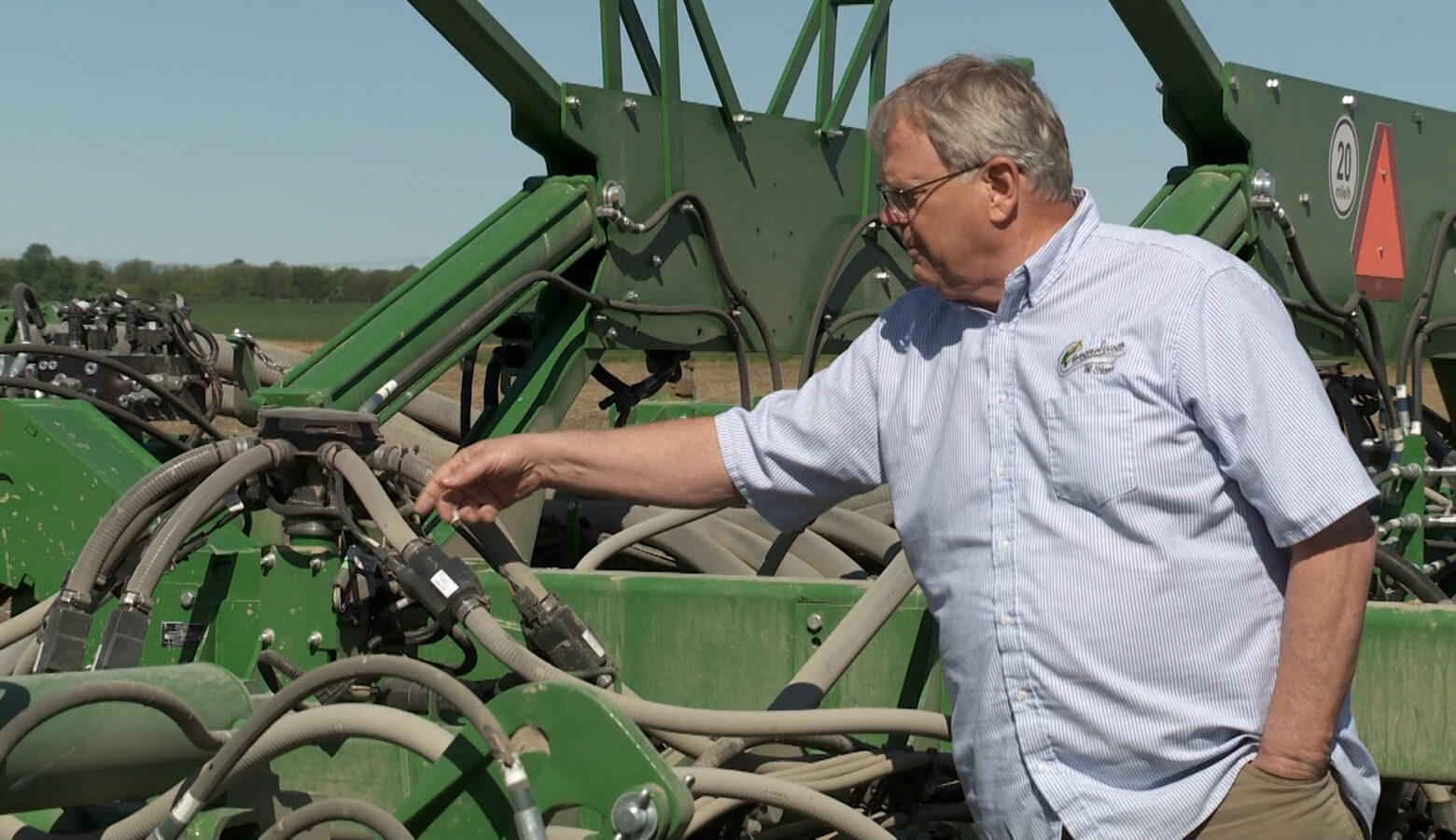Artificial Intelligence and agriculture: a surprising combination

When people think of farming, words like quaint, simple or old-fashioned might come to mind.
But the agriculture industry is often more technologically advanced than one would think.
Take for instance Dennis Carnahan, a farmer in Southwest Indiana near Vincennes. He uses some of John Deere’s latest equipment.
His tractor can drive itself row by row, monitoring exactly what has and hasn’t been covered. His planter changes how fast seeds release from the tank depending on how fast he’s going.
“On the previous planter, I’d have to go back and adjust the hydraulics with a dial manually,” he said. “And now I can do that from the seat and adjust it on the go. So that’s really helpful.”
These pieces of technology help Carnahan save money on seeds and precious time during the planting season.
And those are commercially available pieces of equipment. Behind closed doors at places such as Purdue University, new ideas are being conjured up and tested regularly.
John Evans is an assistant professor of agricultural and biological engineering. His lab aims to help the industry grow more crops for less cost.
“We do a lot with basically trying to automate machines in general, but specifically around row crop agriculture and how we can leverage that to make agriculture more efficient,” he said.
One of those projects is an Open Source, Connected Autonomous Rover, or OSCAR for short. The goal is to create an automated rover using off-the-shelf parts, allowing industry workers the ability to survey entire fields for a fraction of the cost.
“It’s very flexible, kind of a Swiss army knife,” he said. “Hopefully its able to help agronomic researchers do some more high-density sampling that they probably wouldn’t be able to do with just human labor.”
Some businesses are starting to utilize AI services like ChatGPT to automate customer service lines. Artists use a program called DALL-E to create images untouched by human hands. How could this technology affect the agriculture industry?
“It’s going to be interesting, there’s a lot of artificial intelligence that’s already been leveraged in ag,” Evans said. “Whether it’s looking at the corn sample coming through a combine and adjusting settings automatically, which is commercially available, to all the different work that we’re doing.”
Machine learning and by extension the larger umbrella of AI already have a place in the industry.
The role is so large, in fact, that Purdue recently announced a partnership with other universities to share resources at the AI-CLIMATE institute, one of seven new institutes created to bolster AI research across the country. Their goal is to improve the accuracy and lower the cost of accounting for greenhouse gases in farms and forests.
Read more: Purdue receives $500,000 grant as part of new AI Institute
Bruce Erikson, clinical professor of digital agriculture at Purdue, said much of AI’s planned use is about monitoring the health of crops.
“Could we measure something in agriculture, the amount of nutrient in a field or the performance of a steer or something like that on a lot, then knowing that could we alter the ration?” he said. “Could we change the fertilizer? Could we be more specific in our weed control, all of those types of things, and make better decisions?”
AI falls under the umbrella of what is called digital agriculture, a set of tools that collect and analyze data on the industry. Digital Ag has been emphasized by Cornell, Purdue, and the United Nations Project Breakthrough as playing a key role in the optimization of food systems.
Erikson said as the human population continues to grow, the challenge will become making the most of the limited space we have on this planet to grow food for everyone. By maxing out the efficiency of fields through the use of data-driven solutions like CO2 capture, cover crop usage, reducing tillage and more, farmers can grow more food on the same amount of land.
“We can give producers tools that can allow them to do that, without them having to make too many economic sacrifices and for it to fit into their operation,” he said.
And how will the use of AI be received?
Doug Hurt, a Purdue history professor, said that depends on how the technology interacts with the industry.
In 1869, field workers in California burned combines as they saw the equipment as something that would take jobs. Hurt noted that while that was an isolated incident, it speaks to larger fears of people losing their livelihoods.
“It’s not going to be really an effective technology until the 20th century, early 20th century, but the fear was very clear to many people; Here’s a piece of technology, equipment, metal, that’s going to take my job,” he said. “And what do you do? You lash out.”
But by far the most hesitant people were with technology in agriculture was with the introduction of growth hormones to food production, where the Food and Drug Act of 1938 was created to temper the public’s concerns over what goes into the food they buy.
“If you have this matter of growth hormones in milk and growth hormones in beef production, I think there’s very clear evidence that there’s resistance to technological change in American agriculture,” he said.”
Ultimately, Hurt said acceptance by the public and industry workers will be determined by how AI is applied.
“In a way, technology is neutral,” he said. “It’s how it’s used that makes it either a problem or a benefit. And with the rapid changes in technological development today, particularly chemically and genetically, I think this is really a new world.”
Read more: How will artificial intelligence affect health care systems – will it hurt or help?

